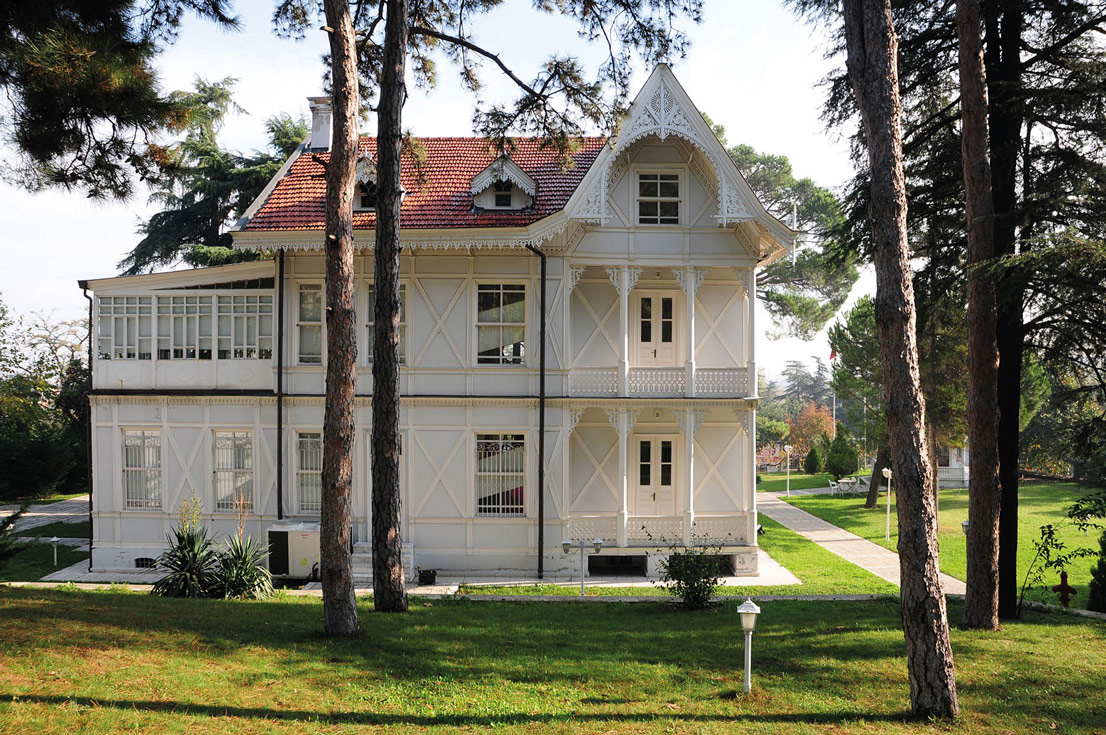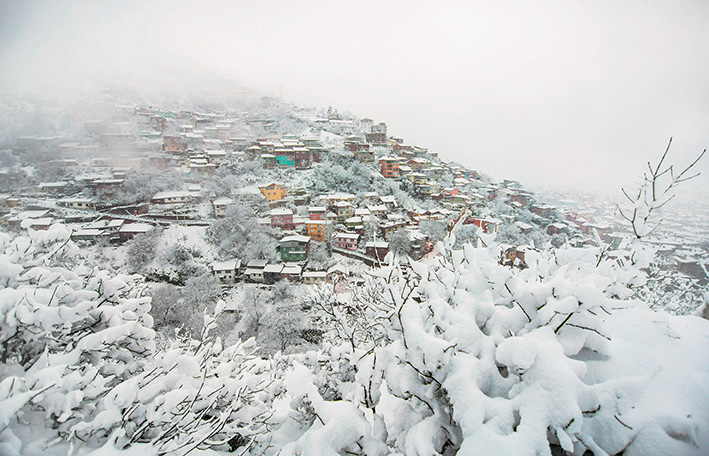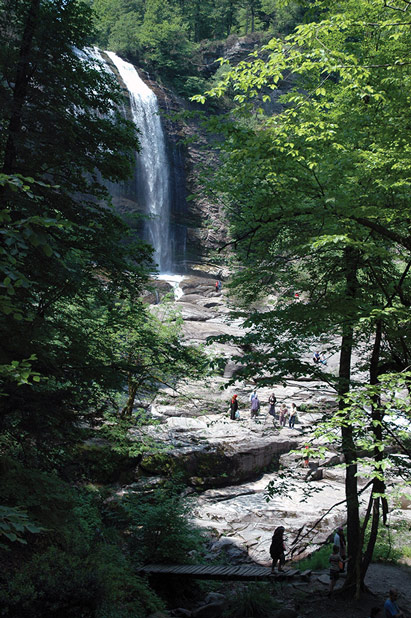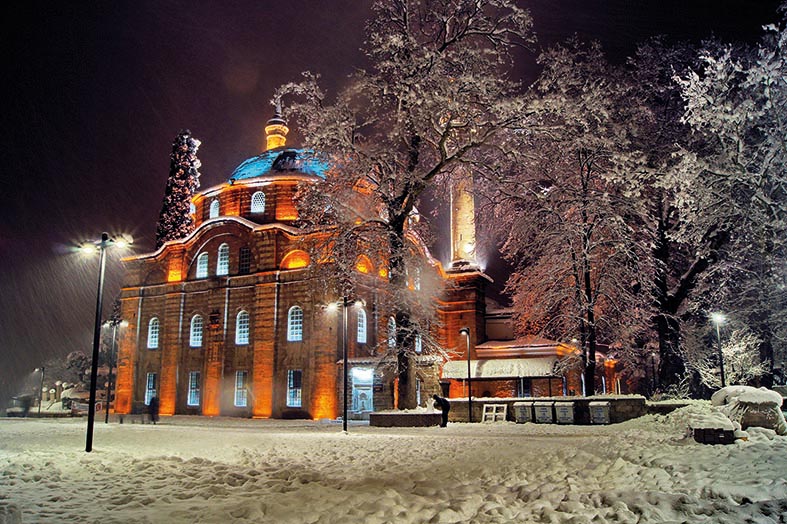Köklerinde Bursa’nın gücü saklı

Köklerinde Bursa’nın gücü saklı
Uzanıp geçmişimize dokunuyor kökleri. Asırlardır şehri onlar koruyor. Çocukları onlar, yaşlıları onlar. Sevgililere kucaklarında yer açıyorlar. Doğanın en güçlülerine bir tek onlar meydan okuyor. Rüzgar bana mısın demiyor güçlü gövdelerine. Sular alıp götüremiyor onları, güneş kavuramıyor. Hüzünlü ifadelerine inat, asırlardır filiz veriyorlar yaşama.
Neler görmüşlerdir kim bilir yüz yıllardır… Bursa insanına yaşlarıyla ve heybetiyle çok şey anlatan, her dalında ayrı hikâyeler saklı Bursa çınarları… Medeniyetlere kucak açmış bir şehrin aktörleri de ancak medeniyet kadar eski olmalıdır diyebiliriz onlardan bahsederken. Asırlık çınar ağaçları ile çevrili bu şehir, doğanın en güzel örnekleriyle tarihe ev sahipliği yapıyor aslında. Bu yüce çınarların en kahraman, en görkemli, en ölümsüz olanları da elbette ki İnkaya Çınarı ve Ağlayan Çınar… Bursa “doğu çınarı”ndan “saplı meşe”ye, “gümüşi ıhlamur”dan “çiçekli manolya”ya kadar 11 farklı türde, yaşları 100 ile 650 arasında değişen 833 anıt ağaç ile belki de Türkiye’nin hatta dünyanın sayılı illerinden… Bu asırlık ağaçlardan 315’inin tescil işlemleri tamamlandı. 518’i için de envanter kartı çıkarıldı. Şu ana kadar tespit edilen en yaşlı ağaç Hürriyet Mahallesi’ndeki Nostalji Bahçesi’nde bulunan 610 yaşındaki çınar ağacı. Günümüze ulaşamayan Bursa’nın kuzeyindeki Oyukçınar Mahallesi’ne adını veren çınar ağacı ise 18,2 metre gövde genişliği ile Türkiye’nin en büyük ağacıydı. Bunun dışında Halkalı ve Dudaklı Çınarı ile her yıl içinde leyleklerin yuva yaptığı Kiremitçi Çınarı’nın, Orhan Cami avlusundaki ağacın Osmanlı ile yaşıt Bursa çınarları olduğu söyleniyor. Bursa’nın kayda değer diğer anıt ağaçları arasında ise Kovukçınar (Ulufeliçınar), Eskicibaba Çınarı, Dua Çınarı, Pirinç Hanı Çınarı, Altıparmak Çınarı, Kültürpark’taki Yaycılar Pınarı Çınarı, Müşkire Çınarı, İznik’teki Havuzbaşı, Beypınarı, Hespekli, Kaymak Köşkü, Lefke Kapısı, Sanayi ve Davud-u Kayseri çınar ağaçları bulunuyor. Ayrıca Geyikli Baba’nın Bursa’nın fethi sonrası uğur olsun diye diktiği ağacın bugün Hisar içinde, Kavaklı caddesindeki, Kavaklı Çınarı olarak bilinen anıt/ağaç olduğu rivayet ediliyor.

“Osmanlı Devleti’nin habercisi çınar ağacı”
Bir gün Osman Gazi; ileride kuracağı devletin mânevî mimarı olacak olan Şeyh Edebali’nin dergâhında konaklar. Kur’ân-ı Kerîm’i alır, sabaha kadar okur ve bir ara içi geçer. Rüyasında bağrından çıkan bir ulu çınarın dalları, cihanın dört bir yanına kol-kanat gerer. Nice insan o ağacın dallarından, meyvelerinden ve gölgesinden istifade etmektedir. Sabah ilk iş olarak bu rüyasını Şeyh Edebali’ye açar. O da, tebessümle der ki: “Müjdeler olsun Osmancık, bey olacaksın. Bağrından çıkacak bir devlet üç kıtaya yayılacak, Allah’ın izni ve inayetiyle… Rüyan da bunun muştusudur!” Ve rüya gerçek olur. Belki de bu manidâr rüyadandır Osmanlı denince akla hep ulu bir çınar, çınar denince de Osmanlı gelmesi… Çınar ve Osmanlı denince ise Bursa…
6 asırla birlikte yaşamak
Bursa’nın ulu çınarlarına en güzel örnek ise 6 asırlık İnkaya Çınarı… İsmini Osmanlı Devleti’nin ilk köylerinden olan İnkaya’dan, görkemli güzelliğini de doğanın Uludağ yamaçlarına sunduğu ayrıcalıklı bereketten almış, doğanın ve tarihin abidesi. Bunca sene boyunca Bursa’nın suyunu ve havasını içine çekerek büyümüş ve köklerini Doburca caddelerine kadar uzatmış. Bursa semalarını yıllar yılı izleyedurmuş. Her dalı bir ağaç, tüm dalları bir orman olmuş. Gölgesine koca bir köyü saklamış. Namı köyün önüne geçmiş. Geçen asırlara inat etmiş. Yitirilen onca değere, yaşamlara kimi zaman da doğal afetlere rağmen ayakta durmuş. Sadece tanık ve yaşayanlara gölge olmuş. Doğduğu topraklara inanıp, bir gün daha soluyabilmek için Bursa havasını, köklerini umutla bağlamış toprağa…
Uludağ yolunda, gökyüzüne uzandığı her santimde topraktan güç almış… “Koca çınar” demişler yoldan geçenler, hürmet etmişler, yıllar yılı saygı görmüş ve ismi “ulu çınar” olarak anılmış. Yeşilin her tonuna sahip yapraklarında gökyüzünün mavisine yoldaş olmuş, toprağın bereketini tüm dokusuna kazımış ulu çınar. 40 metre boyu, 10 metreyi bulan gövdesiyle belki de Bursa’nın en görmüş geçirmiş figürü olan bu yüce çınar, tarihin gizemiyle herkese kucak açmış… Mevlana’nın “kim olursan ol gel” felsefesini hatırlatan bir tevazuuyla kucaklamış ziyaretçilerini… Ziyaretine gittiğinizde öncelikle başınızı yukarıya kaldırmak gerekir. Altında dakikalarca yürüseniz bile yine onun gölgesinde gezersiniz. Gölgesinde çayınızı ya da kahvenizi yudumlarken dinlendiğiniz her anda, içinize çektiğiniz her nefeste Bursa’nın tarihini paylaşırsınız onunla… Osmanlı’nın ilk başkenti Bursa’da; Osmanlı kadar görmüş geçirmiş, Cumhuriyetin kadar genç ve tazedir Ulu Çınar…
Kalın dallarının uzunluğu 150 m.’yi bulan çınar, köyde yaşayan ve çınarı ziyaret etmeye gelenlere hizmet sunarak kazanç elde eden 85 ailenin de geçim kapısı… Bursa’nın anıt ağaçları arasında en çok tanınmışı, Uludağ yolunda Uludağ gibi ulu ve gösterişli serpilir toprağa… Güneşin batışını oradan izlemek size sanki o’na sığınmışsınız hissi verir. Günün oradan uğurlanması, gecenin soğuğunu unutturmuştur bile. Kimi zaman hüzün verse bile ufukta anbean yarattığı renkler, çınar yaprakları arasından süzülen ton ton kızıllıklar ve ışığını alıp giderken size en güzel tablosunu sunması, çoğu insanın en sevdikleri arasındadır. Köy halkı, tarihi çınarın altında çay bahçesi, mangal restoran, market ve hediyelik eşya dükkânları açmış, köylü kadınların yaptığı el işlemesi ürünler, bahçelerinde yetiştirdikleri meyve ve sebzeleri satarken çınar, her dalına ayrı bir yaşam gizlemiştir. Her dalında bir duygu saklı olan çınarın size yaşattığı en eşsiz duygu olan huzurla, gölgenin serinliğinde; kederi, sıkıntıyı, mücadeleyi bir an için ayakucunuza bırakıverirsiniz.
Göle dönüşen aşk hikayesi
Yüzyılları aşkın yaşıyla anıt ağaçlardan bir tanesi de “Ağlayan Çınar…” Bu çınar Gölyazı’nın hazin hikayesinin vücut bulmuş hali. Efsaneleşmiş bir halk destanı gibi adeta… Rivayete göre bir gün, köyün delikanlısı Mehmet, güzeller güzeli Rum kızı Eleni’ye sevdalanmış. Çocukluktan beri süregelen bu aşk, Kurtuluş Savaşı yıllarında Rum köylerinin boşaltılmasıyla birlikte bir kâbusa dönüşmüş. Mübadele ile Apolyont’ta bulunan Rumlar ile Selanik’te bulunan Türkler yer değiştirmiş. Apolyont’tan topyekün yola çıkan Rumlar içerisinde Mehmet’in sevgilisi Eleni ve ailesi de varmış. Bunu öğrenen Mehmet kalabalığın içerisinde sevdiği kızı Eleni’yi aramaya başlamış. Tam onu gördüğü sırada Eleni’nin büyük ağabeyi Yorgi Mehmet’in yolunu kesip geri dönmesini ve Eleni’yi unutmasını söylemiş. “Bizler artık kardeş komşular değil, düşman iki milletiz. Bu iş asla olmaz!” demiş. Mehmet sevdasından asla vazgeçmeyeceğini gerekirse bu uğurda canını bile vereceğini söylemiş. Bunun üzerine sinirlenen Yorgi, hançerini çekip defalarca Mehmet’e saplamış. Aldığı yaralarla acılar içerisinde kıvranan Mehmet, son bir gayretle Eleni ile gizli gizli buluştuğu ulu çınarın oyuğuna kadar gelmiş. Vücudundan akan kanlarla çınarın oyuğuna şunları yazmış: “Canım sevdiğim, sonsuza dek seni burada bekleyeceğim.” Konvoy ilerlerken Eleni’nin sırdaşı ve can dostu Penelopi, Yorgi ile Mehmet arasında geçen tartışmayı görmüş koşarak can dostunun yanına giderek bütün olan biteni anlatmış. Olanları öğrenen Eleni, bir fırsatını bulup konvoydan ayrılarak doğruca sevdiğine koşmuş. Ancak çınarın oyuğuna geldiğinde, her zaman en mutlu anlarını geçirdiği bu ulu çınarda biricik sevdiğini kanlar içerisinde bulmuş. Sevdiğinin başını kollarına almış, son kez gözlerine bakmış, hıçkırıklar içerisinde ağlayarak “Az sonra kavuşacağız ve sonsuza dek bu çınarın oyuğu olacak yuvamız. Bu çınar var oldukça sonsuza dek yaşayacak sevdamız…” demiş. Daha sonra belinden çözdüğü kuşağının bir ucunu çınarın bir dalına, diğer ucunu da boynuna geçirerek oracıkta canına kıymış. Efsaneye göre; ulu çınar bu hazin öykünün ardından kanlı gözyaşları dökmeye başlamış ve göl bu şekilde meydana gelmiş. Güneş onlar için her gün kızıl olarak batmış. Onları anmış, en nihayetinde çınar ağlasa da güneş her gün batmaya devam etmiş ama çınar da aşkları da baki kalmış… Bu çınarın gövdesinden bugün hala özsuyu akıyor. Ya da belki de gözyaşı…
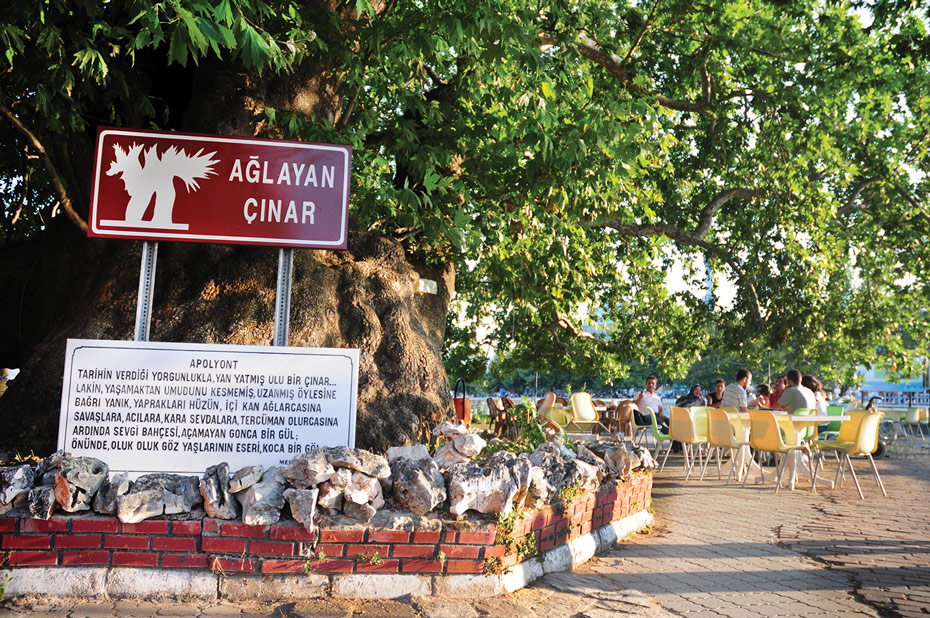
The power of Bursa lies hidden in its roots
Its roots stretch out and touch our past. They have been protecting the city for centuries. The children and the elderly too. They embrace lovers. Only they challenge the strongest in nature. The wind has no effect on their strong bodies. The waters cannot uproot them nor can the sun scorch them. They keep on putting forth life for centuries despite their sad expressions.
Who knows what they saw through the centuries… The plane trees of Bursa with a different story on each of their branches telling so many things with their age and girth to the people of Bursa… We may say when talking about them that the actors of a city that has embraced many civilizations throughout the years can only be as old as civilization. This city is surrounded by centennial plane trees and it is actually home to history with the best examples of nature. The most heroic, stately and immortal of these great plane trees are of course Inkaya Plane Tree and the Weeping Plane Tree… Bursa is among those special cities in Turkey and even in the world with a total of 833 monumental trees with ages varying between 100 to 650 and with 11 different species ranging from the “oriental plane” to “common oak”, from “silver linden” to “magnolia grandiflora”… Registration procedures have been completed for 315 of these monumental trees. Inventory cards have been issued for 518. The oldest tree determined until now is the 610 year old plane tree at the Nostalgia Garden in the Hürriyet Quarter. The tree that gave its name to the Oyukçınar Quarter in northern Bursa which unfortunately could not survive was the largest tree in Turkey with a trunk width of 18,2 meters. Apart from this, it is said that the Halkalı and Dudaklı Plane Trees along with the Kiremitçi Plane Tree which is the home to storks every year and the tree in the courtyard of the Orhan Mosque are of the same age with the Ottoman Empire. Kovukçınar (Ulufeliçınar), Eskicibaba Plane Tree, Dua Plane Tree, Brass Inn Plane Tree, Altıparmak Plane Tree, Yaycılar Pınarı Plane Tree at Kültürpark, Müşkire Plane Tree, Havuzbaşı at Iznik, Beypınarı, Hespekli, Kaymak Mansion, Lefke Gate, Sanayi and Davud-u Kayseri plane trees are among the other significant monumental trees in the city of Bursa. In addition, it is rumored that the tree planted by Geyikli Baba after the conquest of Bursa is actually the Kavaklı Plane Tree located on the Kavaklı Street inside the Hisar.
“Harbinger of the Ottoman Empire: plane tree”
One day, Osman Gazi stays at the Şeyh Edebali dervish lodge who will actually be the spiritual leader of the empire he would end up founding. He takes the Qur’an, reads until morning and dozes off after a while. He dreams that the branches of a monumental plane tree shoots off from his chest and spreads out to all four corners of the world. Many a people benefit from the branches, fruits and shadow of this tree. First thing in the morning, he tells of this dream to Şeyh Edebali who smiles and says: “Good news dear Osman, you will be a ruler. The empire that will shoot off from your chest will spread out to three continents God willing… Your dream tells of this good news!” And the dream becomes reality. Perhaps it is because of this dream that one is reminded of a monumental plane tree when one hears of the Ottoman Empire or vice versa… And why one is reminded of Bursa when one hears of the Ottoman Empire and plane trees…
Living with 6 centuries
Inkaya Plane Tree is the best example to the monumental plane trees of Bursa… A monument of nature and history which has taken its name from Inkaya, one of the first villages of the Ottoman Empire and its magnificent beauty from the privileged abundance that Uludağ has bestowed upon its foothills. It has embraced the water and air of Bursa all these years spreading its roots all the way down to the streets of Doburca. It has watched the open skies of Bursa all these years. Each of its branches has become a tree, all its branches have become a forest. It has hidden a huge village in its shadow. It has become more popular than the village itself. It has persisted against the centuries. It has remained intact despite all those values lost or all those natural disasters it has experienced over the years. It has only been a witness and shadow to the living. Its roots have embraced the soil with hope with belief in its homeland and to be able to breathe in the air of Bursa one more day…
It has found strength in each centimeter of the soil it lays over on the road to Uludağ… Passersby have called it the “Great Plane”, they have respected it for years and it has come to be known as the “Almighty Plane”. It has been a companion to the blue color of the sky with green leaves of every tone, the abundance of the soil has been engraved all over its trunk. This almighty plane tree which is perhaps the most seasoned figure in Bursa with a height of 40 meters and width of 10 meters has embraced everyone with the mystery of history… It has embraced visitors with a modesty that reminds us of Rumi’s philosophy of, “come, whoever you are”… You first need to raise your head high when you visit it. You will be walking in its shadow even if you walk for minutes. You will have shared the history of Bursa with it as you breathe in and out while sipping your tea or coffee under its shadow… The Almighty Plane Tree is as seasoned as the Ottoman Empire in Bursa which is its first capital city and as young and fresh as the Republic…
The plane tree with branches as long as 150 m also provides income to 85 families living in the village who work to serve the visitors of the plane tree… It is the best known among the monumental trees of Bursa and spreads out mightily on the road to Uludağ just like the great mountain itself… Watching the sunset there makes you feel as if you have taken shelter in it. Saying farewell to the day under its shadow will have made you forget the cold of night already. Even though the colors on the horizon make you gloomy from time to time, many people love the different tones of red glowing through the leaves of the plane tree transforming the scenery into a wonderful painting. The village folk have started a tea garden, barbecue restaurant, market and souvenir stores underneath the historical plane tree selling hand crafted products, fruits and vegetables from their gardens as the plane tree hides a different life in each of its branches. You let go of all your worries, grief and struggles in the cool shadow of this plane tree with the peace and relaxation that each of its branches offers you.
A love story that transforms into a lake
Another centuries old monumental plane tree is the “Weeping Plane Tree”… This plane tree is the embodiment of the sad story of Gölyazı. It is almost like a legendary folk tale… Rumor has it that one day Mehmet, a young man from the village fell in love with the beautiful Greek girl Eleni. This love dating back to their childhood turned into a nightmare as the Greek villages were emptied during the War of Independence. The Greeks in Apolyont and the Turks in Thessaloniki changed places during the Population Exchange. Mehmet’s lover Eleni and her family were among those Greeks who left Apolyont. Upon learning this, Mehmet started searching for Eleni amidst the crowd. Just when he saw her, Eleni’s elder brother Yorgi cut off Mehmet’s path and told him to go back and forget Eleni. “We are no longer brothers or neighbors, from now on we are enemies”, he said. Mehmet has told him that he will never forsake his love for Eleni and would even die for it if necessary. Upon hearing this Yorgi got mad and pulling out his dagger he stabbed Mehmet many times. As Mehmet writhed in pain from all the wounds he received, he managed to reach the great plane tree that they met secretly with Eleni. He wrote on the plane tree with his blood: “My dear beloved, I will wait for you here forever.” As the convoy was moving away, Eleni’s confidant and friend Penelopi saw the quarrel between Yorgi and Mehmet and ran over to her best friend to tell everything. When she learned what happened, Eleni managed to escape from the convoy and ran to her lover. However, when she reached the plane tree where they spent many a happy moment together, she saw that her lover was covered in blood. She lifted the head of her lover embracing him, looked into his eyes one last time and said weeping, “We will soon meet and the hollow of this great plane tree shall be our home forever. Our love will live for as long as this plane tree continues to exist…” Afterwards she removed the sash on her waist and killed herself right there by wrapping one end to her neck and the other end to a branch of the great plane tree. Legend has it that the great plane tree started to weep tears of blood and thus forming the lake around it. The sun has continued to set in tones of red every day for them. It has commemorated them and finally even though the plane tree continued to cry, the sun has also kept on setting but their love has survived… The tree still continues to ooze out its sap even today. Perhaps they are just tears…



